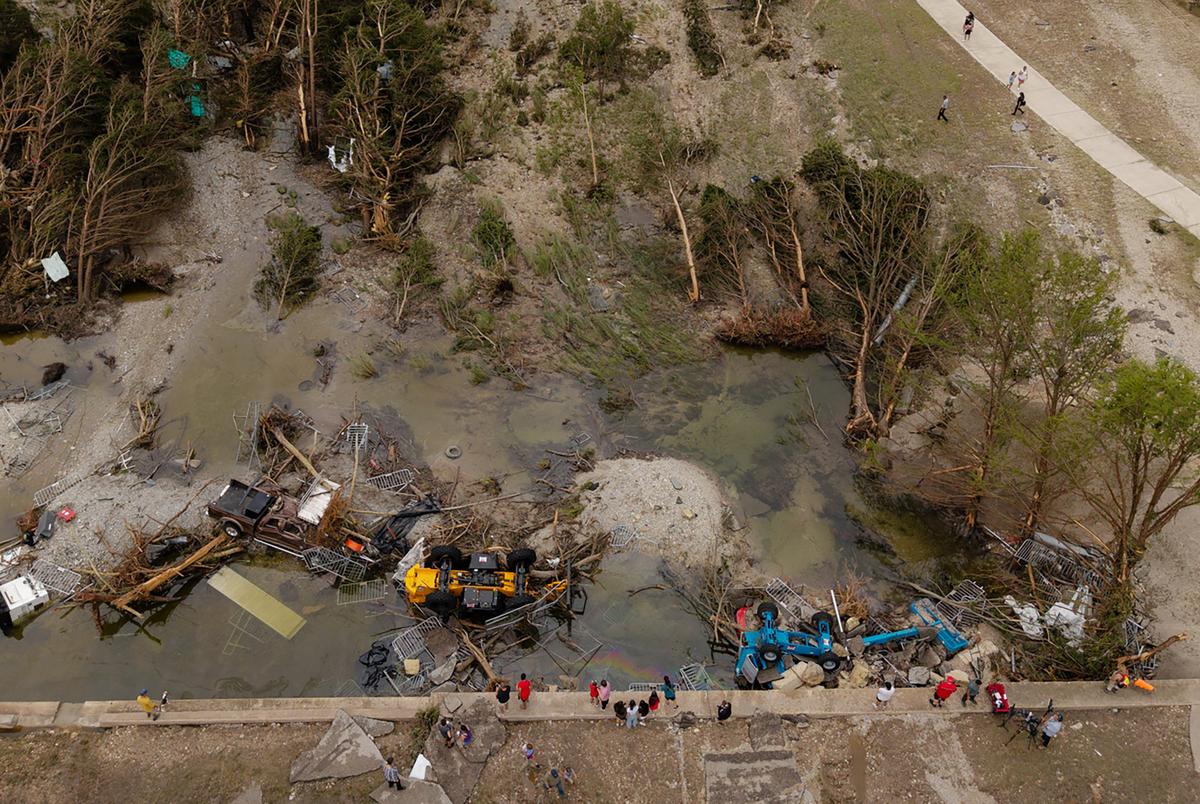The devastation caused by the catastrophic flooding in central Texas has left a trail of heartache, with the death toll rising to 82 people, including 28 children. The sudden flash flooding took many by surprise over the weekend, leading to dozens still unaccounted for as rescue workers tirelessly search for survivors. Among the missing are young girls from Camp Mystic, adding an extra layer of anguish to an already dire situation.
Scott Walden, a resident of Kerrville, vividly recalls the frightening moments when he and his wife were caught off guard by rapidly rising floodwaters. He recounts,
“We heard some thumps early in the morning… My wife looked out and said there’s a river back there. By the time we grabbed our dogs and keys, everything was flooded.”
As communities reel from this tragedy, questions have been raised about the adequacy of local authorities’ warnings and preparedness measures prior to the disaster. Experts point to various factors contributing to the severity of the floods, including a prolonged drought that had parched the soil, making it more susceptible to rapid inundation once heavy rains hit.
President Trump’s plans regarding FEMA (Federal Emergency Management Agency) have sparked concerns amid ongoing natural disasters. His proposal to phase out FEMA and shift responsibilities to states has left many wondering about future disaster response capabilities at both federal and local levels.
Dr. Alan Gerard, a seasoned meteorologist with extensive experience in severe weather warning systems, sheds light on the challenges faced by agencies like NOAA (National Oceanic and Atmospheric Administration). He emphasizes how critical research programs are being threatened by budget cuts that could hamper early warning systems crucial for preventing such tragedies.
Reflecting on climate change impacts exacerbating extreme weather events like flash floods, Dr. Gerard underscores the urgent need for robust weather monitoring and forecasting services. He stresses that despite political debates surrounding climate issues, prioritizing resilience-building efforts is paramount for safeguarding communities against escalating risks.
The tragic loss of lives in Texas serves as a grim reminder of how vulnerable regions are becoming to unpredictable weather patterns intensified by climate change. As experts warn of increasing threats posed by environmental shifts, calls for bolstering resources for weather prediction and disaster response grow louder.
In conclusion, amidst grief and recovery efforts following this calamity in Texas, it is evident that proactive investments in scientific research and emergency preparedness are essential pillars in mitigating future disasters effectively while safeguarding lives and livelihoods.









Leave feedback about this